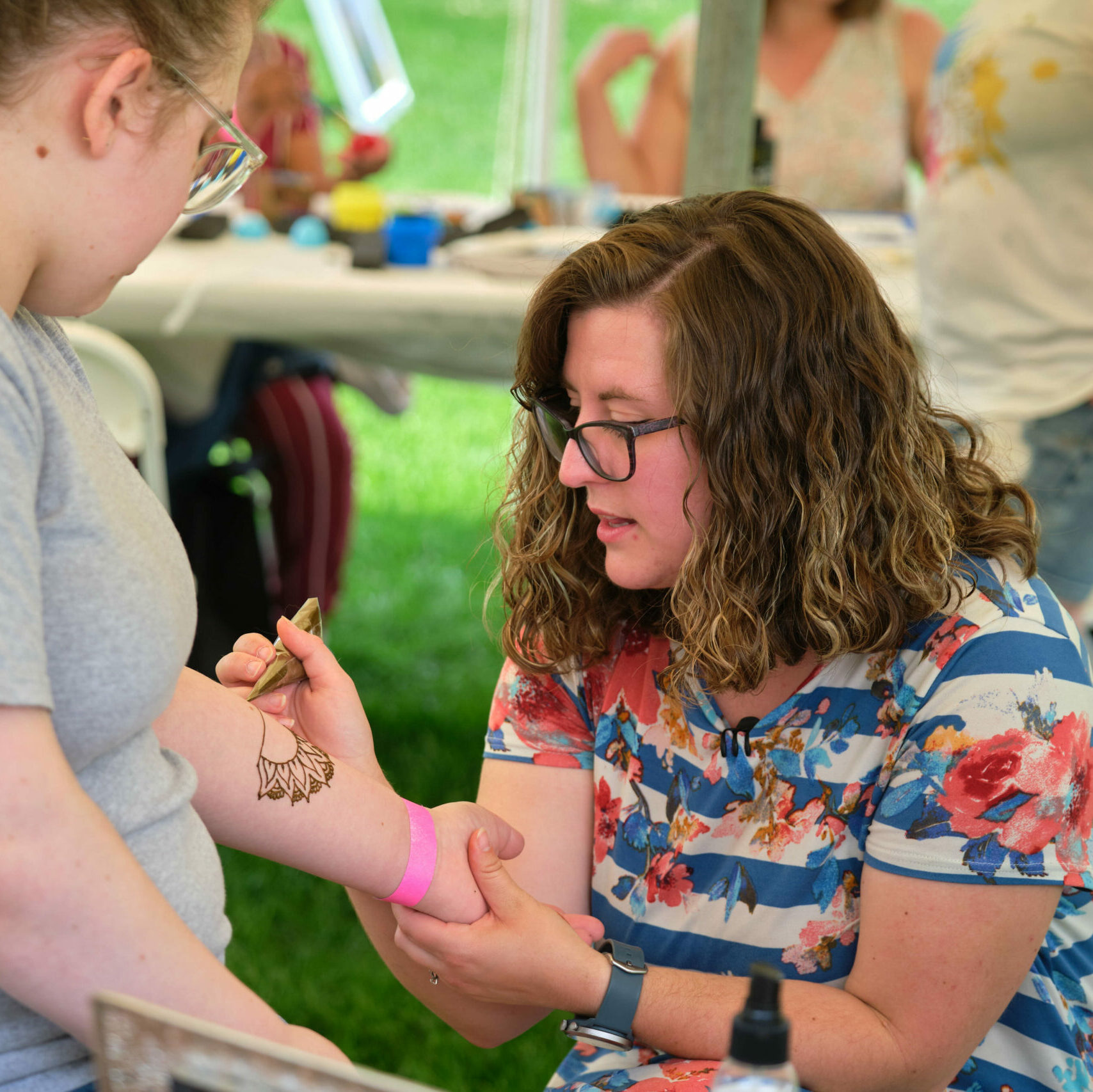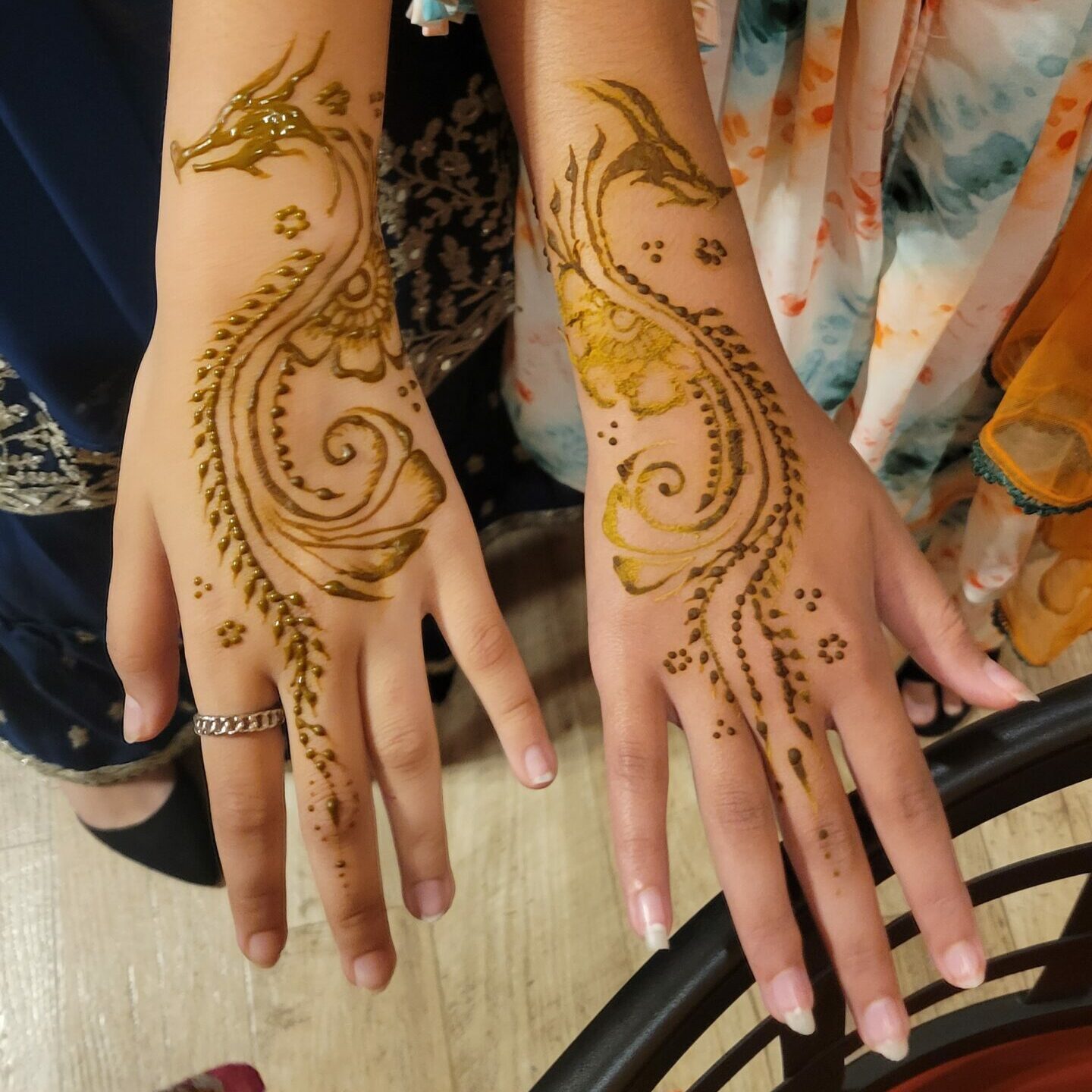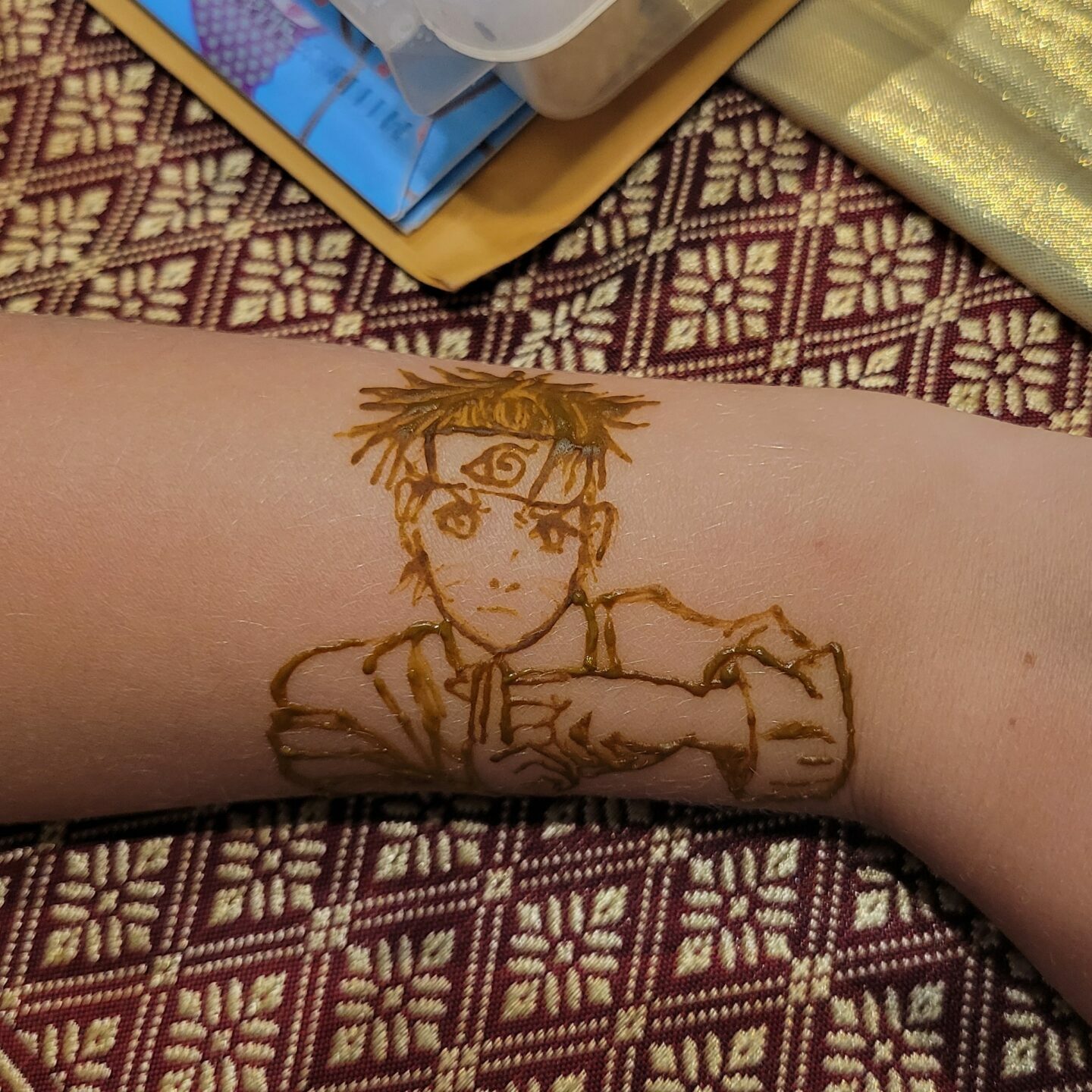“I think henna’s something unique. It’s one of those arts from so many different cultures that has so many different styles. People typically think of it as only Indian, but there are Arabic and Turkish styles, too, like my friend’s from Morocco. The Coptic Jews in Egypt [had their own]. I love to bring all of those into the art that I’m doing.
It might be a different motif or another subject, but I can tie these elements into what I’m doing now. I love when people say, ‘Just do whatever you want!’ And I can incorporate these elements in one design instead of somebody getting something off Pinterest and bringing it to me.
I have copied other people’s work, but being able to incorporate my own elements or my design is my favorite part.
I came across a ministry that made a special trip to India, and they were raising awareness for sex trafficking. I had no idea that was even a thing.
I didn’t know people were forced into labor they hadn’t agreed to – much less sex trafficking, which is ten times worse. The site helped bring awareness to many issues in different countries I hadn’t been exposed to, and I fell in love with India and its culture.
It was totally out of this world for a white girl from Indiana.
In researching the culture, I came across henna. I’m a naturally artistic person, and I had been drawing since I was six or seven. I remember getting into anime – I saw Sailor Moon when I was really little on TV – and I loved to sketch all of these different characters. So henna came naturally to me, just as much as pencil and pen.
Henna’s just like line drawing. The medium worked well for me, but I had to learn how to do it all on my own. And all of that was through a couple of websites by some people doing their Ph.D. on Indian studies and henna. There were no YouTubes on how you could do it; this was way before YouTube was a thing. Now you can learn anything on the Internet, but I had to do a lot of research on it then.
I’ve been booked in the last year more than I’ve ever been before. I’ve been contacted for special events, like the Goshen Health event at the Wellfield, a corporate event for Indian Motorcycle in Elkhart, and I did a birthday party for Rosie at Maple Indian.
It’s mostly special events, and that really brings me a lot of joy. Henna is meant to be a celebratory tradition. When its been used in multiple cultures and contexts, it’s always for a celebration like the birth of a child or a wedding.
Goshen is such an open and diverse place. I’m able to bring just a little bit of that diversity and that experience of something new – a different culture – and people are receptive to it here. They want to learn about the origins of henna, and they want to make sure that things aren’t being culturally appropriated.
They want to make sure that this is something being done with integrity and purpose instead of just being catchy and trendy.”




